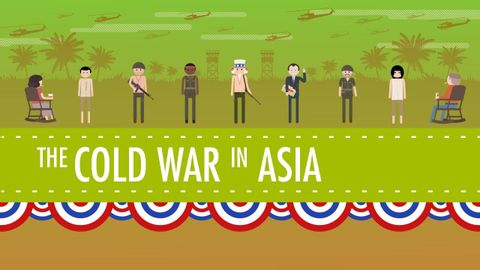
Subtitles & vocabulary
The Cold War in Asia: Crash Course US History #38
00
小葉子 posted on 2013/12/31Save
Video vocabulary
cold
US /kold/
・
UK /kəʊld/
- Noun
- Illness of sneezing, coughing, and a sore throat
- Adjective
- Having a very low temperature
- Being unfriendly or lacking emotion
A1
More begin
US /ˈbeɡɪn/
・
UK /bɪ'ɡɪn/
- Verb (Transitive/Intransitive)
- To do the first part of an action; to start
- To initiate or set in motion.
A1
More watch
US /wɑtʃ/
・
UK /wɒtʃ/
- Verb (Transitive/Intransitive)
- To keep in check, manage, or control something
- To look at something for entertainment, e.g. TV
- Uncountable Noun
- Period of time someone is responsible for guarding
A1TOEIC
More world
US /wɜrld /
・
UK /wɜ:ld/
- Noun (Countable/Uncountable)
- All the humans, events, activities on the earth
- Political division due to some kind of similarity
A1
More Use Energy
Unlock All Vocabulary
Unlock pronunciation, explanations, and filters
